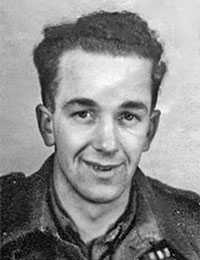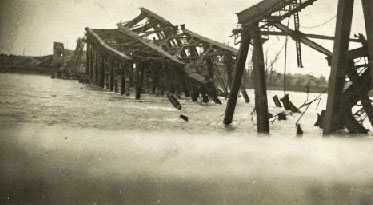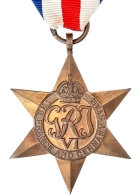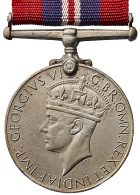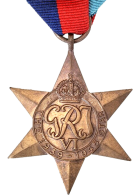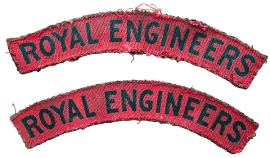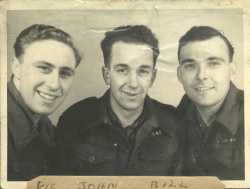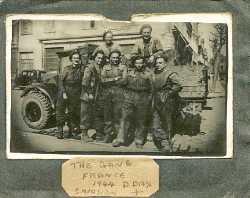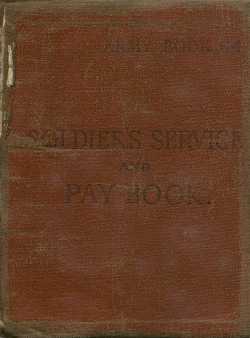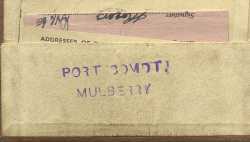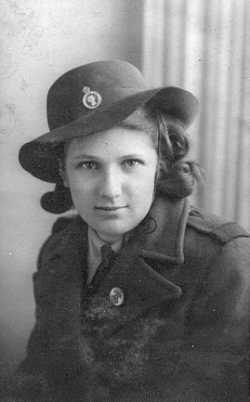My father was John Arthur Rogers, born Forty Acre Lane, Canning Town in May 1924. He went to Rosetta school in Custom House in east London. Once he left school he got a job in a Greengrocers and Butchers shop, and two weeks after his 20th birthday, my Dad stormed the beaches of Normandy to free Europe from the Yoke of Nazi rule! He did not do this on his own, a couple of his mates came with him and a few other lads from around the world, plus some friendly Americans he met on the way. He sadly left some of them for ever on the Battlefields of Europe. He had been in the local Home Guard (LDV, Local Defense Volunteers), and in January 1943, he was called up and sent to Edinburgh. After his basic training he joined the Royal Engineers.
In April 1943 became a Driver in Royal Engineers. He then spent the following year being trained for the big day. (Although he did not know that at the time!). He was based in Edinburgh Castle, the Tower of London, and Longmoor Military Railway, as well as some old council buildings in Canning town that had been turnred into Barracks. He learnt to drive some very big lorries in the middle of the Yorkshire moors in mid-winter. He finally held a `All Groups License` which meant if it had a wheel or a engine, anything from a Motor bike to a Tank, he knew how to move it, and what to do if it did not. Amongst some of the things he did before D-Day was to drive convoys full of explosives from Essex through the Blackwall Tunnel Under the River Thames in London (they closed it off to normal transport and sent one lorry at a time through, just in case something went wrong!) and then on down to the coast.
D-Day June 7, 1944
On D-Day he was a member of 10th Mobile Railway Workshop, 962 Company Royal Engineers. He boarded a ship in a big lorry and headed for France. The drivers were put in the bowels of the ships and had to stay there, so no daylight and no idea what was happening. He was due on Gold Beach (sub-section Jig Beach) on D-Day, but owing to a delay clearing the beach, he spent a very uncomfortable 24 hrs bobbing about in the English Channel, before disembarking early on the 7th June. Soon after the invasion a terrible storm stuck the Normandy coast. It destroyed the American version of Mulberry, and nearly destroyed the British one. During the storm, my Dad had to go and rescue some members of the Royal Artillery who were stuck out on the guns at the end of the harbour defensives. The weather was so rough the roadways could not be used to get to them, and the fear was the Gunners would drown. Because my Dad’s all group license, and the fact there was small boat tied up with an Engine and a Steering wheel he `volunteered` with some mates to go out in the boat and get them.
Liberating Europe
Once the harbour was established, he moved in land. The first main town they came to was Bayeux and then on to Cean. He then fought his way through France, Belgium, and Holland, then finally in to Germany.
Tea saved his life
He was cut off behind enemy lines in Belgium for a while during what become to be known as the Battle of the Bulge. It was a tea break that saved my Dads life in Belgium. He was lead driver in a small convey travelling in Belgium, delivering materials. As they were driving along, they could see in the distance vehicles approaching. The sergeant next to him, said,” Pull the lorries off the road and we will have a brew up to allow the other convey `to pass`”. They pulled in to a clearing in the forest. A young Engineer was sent to see what was happening. He soon came back `hot foot`, shouting, “the Germans are coming”. After being called a few names by the sergeant, they all went to have a look, and came face to face with some very angry PANZERS! Luckily they had their turret covers closed and were going somewhere very fast and did not notice the lorries. Dad and his mates were lucky and managed to get back to the British Lines. If they had carried on, they would have run face on into the tanks, almost certain death.
End of the war
His main job was to help to build Bailey Bridges, which he did many of along the way. One of his commanding Officers was from the famous Irish Building family, McAlpine, and for while they were known as McAlpines Fusiliers. Even when peace was declared, the war was not over for him, he had to stay in Germany and help to rebuild the country. He was finally discharged in June 1947 at York. My dad passed away in November 1986 at the age of 62. He died of a Heart Attack, caused by injuries received in the battle for Europe.
His son, Robert John Rogers
